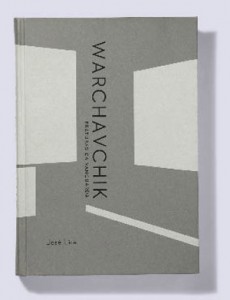 Adjusting Brazilian architecture until it was synchronized with hands on the clock of the international avant-garde movement did not happen from one day to the next. Neither was it the result of the work and will of a “national” architect. However, it was in São Paulo that the Russian Jewish immigrant, Gregori Warchavchik (1896-1972), born in the cosmopolitan city of Odessa, reviewed the academic education he had received in Rome and launched the base of modern architecture in the country. Visible, albeit in a fractured way as a result of local acceptance, they gained an extended symbolic landmark with the Exhibition of a Modernist House, opened in March 1930. Built for renting out, the house was presented to the public as a tribute from Warchavchik to São Paulo, the artistic and social environment of what in his words “allowed him to carry out in very little time various constructions within the new guidelines.” Decorated with sculptures and paintings from exponents of local and international modernism, it attracted more than 20,000 visitors. According to Oswald de Andrade, with this exhibition, the “cycle of fighting the old-fashioned, which had been started by an audacious group in the Municipal Theater in February 1922, ” came to an end.
Adjusting Brazilian architecture until it was synchronized with hands on the clock of the international avant-garde movement did not happen from one day to the next. Neither was it the result of the work and will of a “national” architect. However, it was in São Paulo that the Russian Jewish immigrant, Gregori Warchavchik (1896-1972), born in the cosmopolitan city of Odessa, reviewed the academic education he had received in Rome and launched the base of modern architecture in the country. Visible, albeit in a fractured way as a result of local acceptance, they gained an extended symbolic landmark with the Exhibition of a Modernist House, opened in March 1930. Built for renting out, the house was presented to the public as a tribute from Warchavchik to São Paulo, the artistic and social environment of what in his words “allowed him to carry out in very little time various constructions within the new guidelines.” Decorated with sculptures and paintings from exponents of local and international modernism, it attracted more than 20,000 visitors. According to Oswald de Andrade, with this exhibition, the “cycle of fighting the old-fashioned, which had been started by an audacious group in the Municipal Theater in February 1922, ” came to an end.
If, dear reader, you have come this far, you must be asking yourself what is new, not from Warchavchik, but in this review. And rightly so, because the opening of this text echoes that of other material published in the leading newspapers following the launch in April of this year of the book by José Lira. So if you are a reader who is interested in cultural debate you are undoubtedly aware of the subject. However, perhaps you are less familiar with the analytical progress of Fraturas da vanguarda [Fractures of the avant-garde].
Warchavchik’s visibility and prestige are largely due to the inventiveness of his production. Nevertheless, they would have been unthinkable had he not entered the powerful Klabin family clan following his marriage in 1925 to Mina, two years after he arrived in Brazil. Much traveled and well-educated, Mina was much more than a refined housewife. She distinguished herself as a landscape artist, planning the gardens that graced the houses designed by her husband, and because she was the first-born in a family of women, when she lost her father she found in Warchavchik the anchor she needed to ensure possession and expansion of her wealth, which was threatened by a succession dispute by her male relatives: and not only her, but her mother and sisters, one of whom, Jenny, was married to Lasar Segall. In the division of family work, the architect was responsible for conducting the business associated with their substantial land wealth. And if this ensured that Warchavchik acquired notable social capital (as indicated by his having quickly joined the illustrious circles of the city and by the clientele who sought out his services), it also left him in the uncomfortable position of a relegated avant-garde artist, overshadowed by the “cariocas” [Rio residents], Lúcio Costa and Niemeyer, who were mainly responsible for the internationalization of Brazilian architecture.
Pressed by constrictions that were due to the importance that he assumed in the economic life of the family, the architect, who was the main person behind the start of architectural modernism in Brazil, gradually moderated the potential of his innovations and the tension between bold conception and the actual conditions of its applicability, which had underscored the beginning of his career in the country. This explanatory rationale is merely suggested in the book by José Lira. And it could not be otherwise, since the author draws close to Warchavchik not with the sharp blade of a trained sociologist in the correlation between biography, social experience and artistic production, but with the zoom lens of the competent and erudite historian unveiling the architectural web at its interface with the history of culture and of the city. In the words of Adrián Gorelik, who wrote the preface to the book, José Lira shows that for the “historian of architectural culture it is a not a question of canonizing figures or defining the correct paths of what modern architecture was, but of understanding.” The result is a renewed view of the history of Brazilian architecture, Warchavchik and the São Paulo metropolis that welcomed him.
See also the article “The new home of modernism”
Heloisa Pontes is a professor at the Department of Anthropology at Unicamp and a researcher at the Pagu Center, at the same university
Republish
